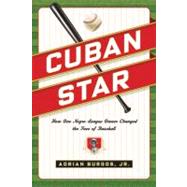
| Preface | p. ix |
| Rising Star | p. 3 |
| Roots and Routes | p. 7 |
| Making Harlem Home | p. 28 |
| Launching the Cuban Stars | p. 45 |
| The Rise and Fall of a Numbers King | p. 68 |
| Witness for the State | p. 99 |
| A World Made New | p. 127 |
| Rebuilding the ôLatins from Manhattanö | p. 131 |
| Glory Days | p. 154 |
| Scouting the Americas for Giants | p. 186 |
| From Cuban Stars to Dominican Giants | p. 215 |
| Into the Shadows | p. 237 |
| Notes | p. 259 |
| Acknowledgments | p. 279 |
| Index | p. 283 |
| Table of Contents provided by Ingram. All Rights Reserved. |
The New copy of this book will include any supplemental materials advertised. Please check the title of the book to determine if it should include any access cards, study guides, lab manuals, CDs, etc.
The Used, Rental and eBook copies of this book are not guaranteed to include any supplemental materials. Typically, only the book itself is included. This is true even if the title states it includes any access cards, study guides, lab manuals, CDs, etc.